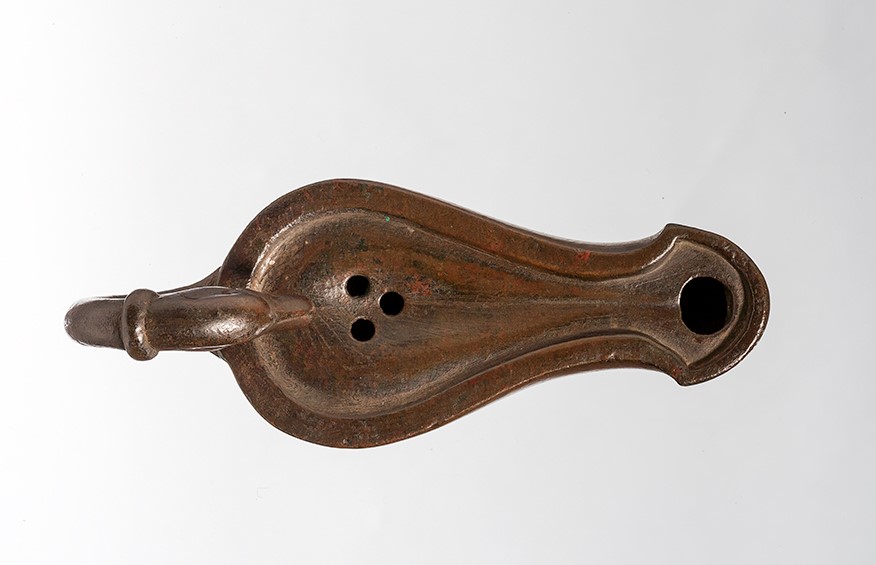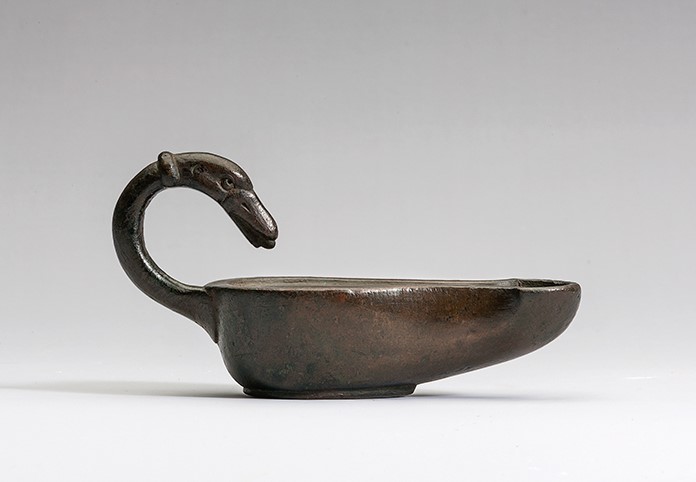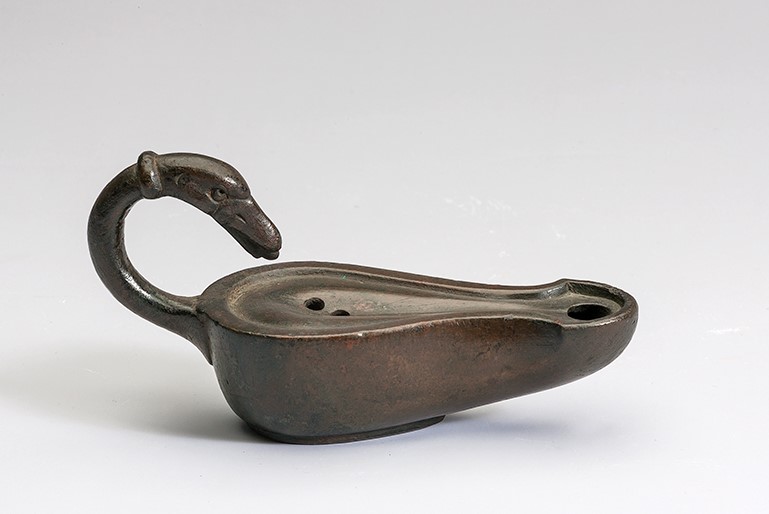Acquisition number: 2006.05
Well preserved. Flat base, offset from the wall. On the top of the body there are three holes at the so-called filling point and a channel running along to the wick-hole which is circular. The edge is flat.
Arching handle of circular section and terminating in a swan-, goose- or duck-head which is marked off behind by a ring. The creature has a protruding tongue or, more likely, a piece of food. There are short incised lines for the nostrils, outlined eyes with indented pupils, then a short curved line behind at the rear of the head.
Title: Bronze Lamp - 2006.05
Acquisition number: 2006.05
Author or editor: J.R. Green
Culture or period: Roman Imperial
Date: 1st century AD.
Material: Metal - Bronze
Object type: Lamps - Bronze
Dimensions: 150mm (l) × 58mm (w) × 75mm (h)
Origin region or location: Italy
Display case or on loan: 11
Keywords: Roman, Imperial, Lamp
Arte Primitivo (Howard S. Rose Gallery, Inc., New York), Auction, 30 May 2002, no. 522; Bonhams Antiquities (London), Sale Cat., 27 April 2006, no. 147 (ill.).
2006.05
Bronze Lamp
Presented by the Friends of the ANU Classics Museum. Total length 15cm; total ht 7.5cm; ht bowl 3.7cm; width 5.8cm.
Well preserved. Flat base, offset from the wall. On the top of the body there are three holes at the so-called filling point and a channel running along to the wick-hole which is circular. The edge is flat.
Arching handle of circular section and terminating in a swan-, goose- or duck-head which is marked off behind by a ring. The creature has a protruding tongue or, more likely, a piece of food. There are short incised lines for the nostrils, outlined eyes with indented pupils, then a short curved line behind at the rear of the head.
For a version very like ours in form, see B. Pettinau, “Lucerne”, in L.P. Biroli Stefanelli (ed.), Il bronzo dei Romani: arredo e suppellettile (Rome 1990) 88 fig. 41 with photograph on p. 272 no. 63, fig. 258. It is from Herculaneum, probably to be dated to the middle of the first century AD. In this case, however, the bird is modelled as a dolphin with what seems to be a shell sticking out of its mouth.
One may observe that similar elements overhung the prow and stern of Roman ships.
Arte Primitivo (Howard S. Rose Gallery, Inc., New York), Auction, 30 May 2002, no. 522; Bonhams Antiquities (London), Sale Cat., 27 April 2006, no. 147 (ill.).


